The McKenzie's Official world tour site
| | Sun | Mon | Tue | Wed | Thu | Fri | Sat |
|---|
| 26 | 27 | 28 | 29 | 30 | 1 | 2 | | 3 | 4 | 5 | 6 | 7 | 8 | 9 | | 10 | 11 | 12 | 13 | 14 | 15 | 16 | | 17 | 18 | 19 | 20 | 21 | 22 | 23 | | 24 | 25 | 26 | 27 | 28 | 29 | 30 | | 31 | 1 | 2 | 3 | 4 | 5 | 6 |
Search
Navigation
Categories
|

Monday, 11 May 2009
Tennant Creek to the Great Barrier Reef....
We stayed at Tennant Creek and saw some interesting and original Aborigine paintings. As we were now further north it was decision time....At Three-Ways, travellers decide whether to continue north towards Katherine and Darwin or to turn right and head east. As time was no longer on our side, we decided that our best option would be to turn right and leave the north of the Northern Territory until next time! We would not have time to explore the area and give it full justice so we would prefer to wait a while.
On our next stretch of road, we came our closest ever to running out of fuel. Phil knew that Aussie would usually have done 550 kms to a tank, but terrific head- on winds increased our fuel consumption dramatically (down to 450 kms!) and we must have been travelling on fumes as we glided down towards the town of Mount Isa. We thanked more of our lucky stars for the fuel station ahead (and for selling diesel too!). When we stayed at the Sunset Top Tourist Park we met up with Rob and Janice and compared local lingos and phrases. We would like to thank them for their words of encouragement- ‘fair dinkum!’
On Good Friday we made it to McKinley and to the infamous Walkabout Creek Hotel. This was not the best day to visit a pub in Australia, as we soon found out. They are not permitted to open at all on Good Friday – so we camped at the site behind the pub and waited until morning. We stayed inside Aussie as the little black flies were very persistent again! We watched the Crocodile Dundee films and it was very strange to be watching them, on the premises where it all originated from.
The next morning we had to have a pint inside the very traditional setting, with lots of photos and memorabilia on display. Unfortunately the ‘Never- Never Safari’s’ were no longer available!
At Winton, the home of ‘Waltzing Matilda’, we found out more about the song which is now often referred to as Australia’s un-official National Anthem. It was written by A. B Banjo Paterson in 1895. There are now three different versions of the original song.
Next we motored to Ilfracombe (near Longreach in outback Queensland) and pitched up at the caravan park. This campsite actually advertises that they hold happy hours most nights! This town is so called, as the architect came from Ilfracombe in Devon, UK. Phil was routinely stopped for a breath test on the way into Longreach, which took us all by surprise. This was for his first time ever – so he blew into the box and then we were able to continue along our way! Ilfracombe has one of the ‘oldest’ pubs in the area, which seemed strange to us -as it was only about 100 years old!
At Emerald we found a place to camp right under a railway track, which was fine until the middle of the night when a 101 trailer coal train passed through on its way to the Capricorn coast! We also went on a night walk with our mag-light to do some animal spotting. We had to dodge the toads all over the tracks and only later found out that these were Cane toads. Phil, Jemma & Ben grabbed the chance to do a spot of fishing here too and Jemma caught two fish this time (a fork -tailed catfish and a perch).
Next stop was Gracemere Caravan Park, along the Old Capricorn Highway, which was only five minutes away from Rockhampton. Here we met up with some more friendly neighbours- Dave, Yvonne and family. Their children were almost identical ages to Jemma and Ben and they all got along very well! We got talking about more recommendations to see and do and as the family come from Townsville, maybe we shall catch up again one day!
The Great Barrier Reef was our next mission and so we moved to the Causeway Caravan Park to get more information. There were giant mosquitoes around this area, all who thought we were very tasty. They were even swarming around on the outside of our fly nets!
We went down to the Causeway to find out some more and decided to take a ‘tinny’ motor boat out for an adventure! It was good fun but as a speed boat was zooming around there was little chance of us catching any fish! When we got back the children jumped ship and went for a swim along the shore. As we watched them, we had a dodgy encounter with a black and hairy spider that actually reared himself up at us (in anger?) We are still not sure what he was- but we weren’t sticking around to take any chances about how friendly he may or may not have been!
We made some telephone calls to finalise the arrangements for our campervan hire in New Zealand and went along to Keppel Sands. The Bill Kingel Caravan Park and folk were very welcoming and we even joined the local gang for a scrummy pizza and a beer at the local pub!
The Koorana Crocodile farm on the Capricorn Coast in Queensland was a very interesting and ‘safe’ place to find out more about these amazing creatures. John Lever and his family have been developing their thriving business for more than 25 years. There was a wealth of knowledge and information to be shared on a real life Crocodile Dundee guided tour! The many rescue and crocodile capture stories told were all very different and intriguing. We were very lucky to be able to watch a croc hatch from his egg – right in front of us! What a shock for him to come out and see all of us looking at him! Jemma and Ben got to hold another croc too – with his mouth taped up just in case!
Afterwards, our sample of crocodile pie was delicious and we would all have liked some more! It was difficult to compare the flavour to any other meat in our experience- but it was really tasty! Honest!
We took a fantastic trip on the Freedom Flyer, out from Rosslyn Bay to the Keppel Islands. The two largest of these islands are Great Keppel (1454 ha) and North Keppel (627 ha), and they are surrounded by 16 smaller islands. We took a full day cruise including morning tea and cakes upon arrival to the Keppel’s!
The Glass Bottom Boat was next on the agenda with a very informative commentary on a wide variety of sea life that we saw along the way. After a delicious BBQ lunch Phil, Jemma and Ben enjoyed snorkelling over the Plate, Tabletop and Stag horn Corals on the fringing Great Barrier Reefs. They saw fantastic colours and over 80 different varieties of fish and sea-life, including a sea snake - in less than 2 hours in the water! I enjoyed a beautiful walk along the shore, in the bright sunshine and waited for their return! We hope that the underwater camera will have captured some of those amazing moments – but we shall have to wait and see about that!
On the way back, Jemma and Ben had more great fun Boom-netting (or in the Ocean Spa for the more refined!) They laid back and held tight onto a net that was attached to the back of our boat – and were pulled along through the waves! At any time they got tired or got left behind, a speed boat member of the crew would come along to the rescue! Phil refers to this as ‘live bait trawling’!!
Everyone was exhausted after an amazing day – another highlight on Macswayround!
Monday, 11 May 2009 12:15:26 (GMT Daylight Time, UTC+01:00)  Australia
Tennant Creek to the Great Barrier Reef....
Australia
Tennant Creek to the Great Barrier Reef....
FACTIODS:
• With the discovery of gold in 1932, Tennant Creek celebrates humble beginnings as Australia’s last ‘gold rush’ town.
• Mount Isa is famous for having the ‘biggest Irish club ‘in the World!
• In 1923, John Campbell Miles sampled rocky outcrops and realised that it was heavily mineralised. He had stumbled on to one of the world’s richest copper, silver, lead and zinc ore bodies. He decided to call his discovery – ‘Mount Isa’.
• 86 years later, the Mount Isa mine is still one of Australia’s largest producers of copper ore and is Australia’s deepest underground mine.
• Mount Isa has a great climate with an average of 9.5 hours of sunshine per day and only 50 wet days per year.
• There are two distinct seasons –the ‘Wet Season’ which is from November to March and the ‘Dry Season’ centred on June, July and August.
• McKinley is a classic outback town with a Bush Nursing Clinic and Queensland smallest library.
• Winton holds the Guinness book of Records title for the longest road train- with 34 trailers- each with 20 wheels per trailer.
• Longreach is known as the birth place of QUANTAS airlines (Queensland and Northern Territory Air Service), with its first flight taking place from Charleville to Clocurry, and touching down in
Longreach and Winton en route in 1922.
• Emerald is surrounded by cotton farms and grain fields and the area also produces cattle, oil seeds, soybeans and citrus.
• The Gem fields around Emerald are the largest Sapphire producing fields in the southern Hemisphere. Keen fossikers can also find topaz, amethyst, jasper, chalcedony, tourmaline and diamond.
• Just west of Rockhampton, the town of Gracemere is home to the largest livestock sale yards in the Southern Hemisphere.
• Rockhampton is known as the ‘Beef Capital of the world’.
• Built on the back of gold and cattle, Rockhampton’s true blue heart is lovingly maintained in the heritage architecture, grand old pubs and the best steaks anywhere!!
• In 1858, gold was discovered at Canoona, approximately 50kms north of Rockhampton. 15,000 people arrived in the area in search of gold.
• 101 wagon coal trains regularly travel along the Capricorn Highway. The Bowen Basin extracts over 100 million tonnes of coal annually, making it Australia’s most important export commodity.
• It is possible to determine the outcome of the sex of a baby crocodile by adjusting the temperature of the incubator.
• When a crocodile first hatches – it has 63 teeth – this includes an odd tooth right on the end of his nose! This tooth has the sole purpose of helping the babe to break out of his egg shell and then the tooth is lost within his first 24 hours of life.
• There are two species of Crocodile – the Fresh Water and the Salt Water. It is the Salt Water variety that have eaten three people (that we know about), within the time we have been in Australia!
• The Great Barrier Reef stretches for approximately 2,000 kms and is visible from the moon. It is approximately 12,000 years old and is the largest natural feature on earth and the largest structure made by living organisms.
• The Great Barrier Reef comprises of approximately 2,900 individual coral reefs, covering an area of 348,000 square kilometres and is an established National Marine Park protecting about 400 species of hard and soft corals.
• The Great Barrier Reef is home to approximately 1,500 types of fish, 4,000 kinds of mollusc, 350 echinoderms and countless species of sponge, crustaceans and sea grasses.
• The Great Barrier Reef is one of the richest, most complex and diverse ecosystems in the world.
• The Great Barrier Reef is greater in area than the entire UK.
• At its widest the reef is 80kms wide, at its furthest out, it is 300 kms from the mainland coast, and at its tallest it is more than 500 metres thick.
• In 1770 Captain James Cook sailed Endeavour through Keppel Bay and was the first European to see the islands. He named the bay and the Islands after Rear Admiral Keppel.
• Male Seahorses give birth! They have a pouch on their belly which holds the eggs until they hatch. Seahorses are the world’s slowest fish!
Monday, 11 May 2009 12:05:45 (GMT Daylight Time, UTC+01:00)  Australia
Tennant Creek to the Great Barrier Reef....
Australia
Tennant Creek to the Great Barrier Reef....
WILDLIFE HITS:
• Cane Toads
• Red-Tailed Black Cockatoos
• Osprey – dive and catching fish in front of us.
• Funnel-web spider??
• Bourke’s – ad Parrot
• Starlings
• White Plumed Honey –Eater
• Blue-Winged Kookaburra
• Black –Faced Cormorant
• Blue – Faced Myna
• Black Kite
• Brolga Crane
• Eurasian Coot
• Purple Swamp hen
• Pale-Headed Rosella
• Spotted Turtle Doves
• Forest Kingfisher
• Black Shouldered Kite
• Brahminy Kite
• Tropical Form Goshawk
• Goanna
• Geckos
• Orange-eyed Tree Frog
• A great variety of fish, sea life, corals and reefs.
• Sea Snake
Monday, 11 May 2009 12:02:48 (GMT Daylight Time, UTC+01:00)  Australia
Img Border0 Srchttpblo
Australia
Img Border0 Srchttpblo

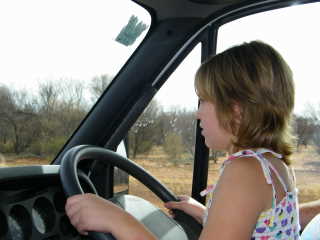
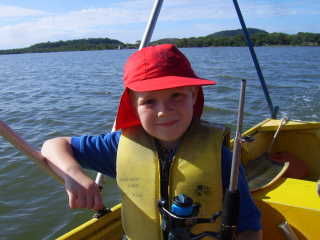
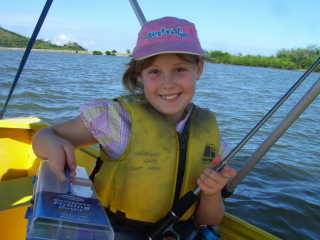

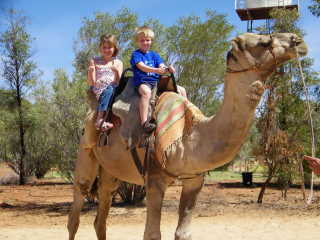
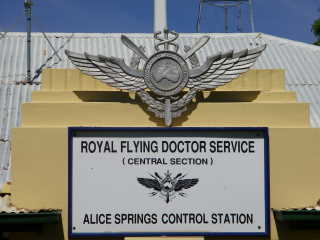
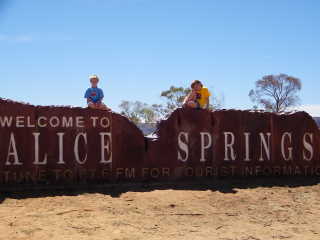
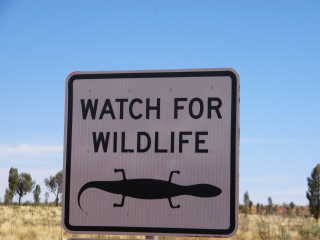
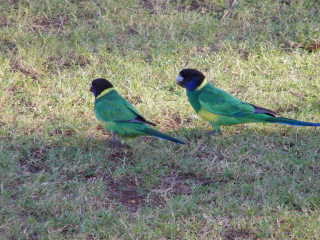
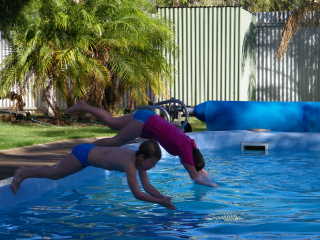
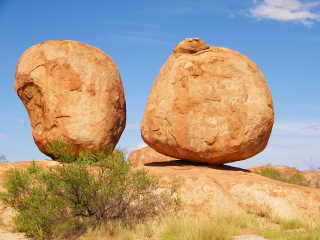 Monday, 11 May 2009 11:47:17 (GMT Daylight Time, UTC+01:00)
Monday, 11 May 2009 11:47:17 (GMT Daylight Time, UTC+01:00)  Australia
Australia

Friday, 08 May 2009

Wednesday, 29 April 2009
Melbourne to Uluru pics.......
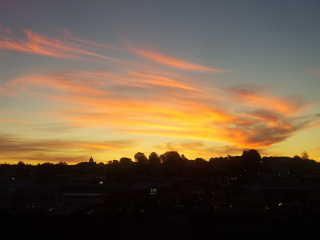
A Melbourne Sunrise......
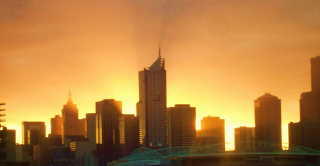
The Melbourne Skyline......
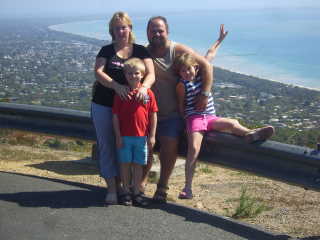
We were at Arthur's Seat!
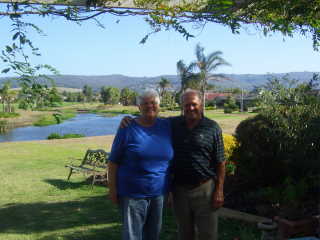
Jack and Kath at Safety Beach.
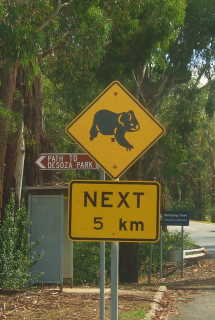
Koala Alert!

Panning for Gold!
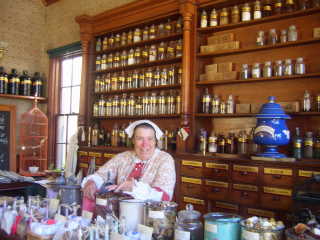
The shop keeper lady at the Ballarat Store.

The Geelong Gang!

Our long lost cousins - Neil and Lou!

More of the Geelong Gang!
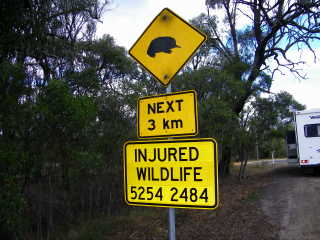
Echidna Alert!

THE GREAT OCEAN ROAD!
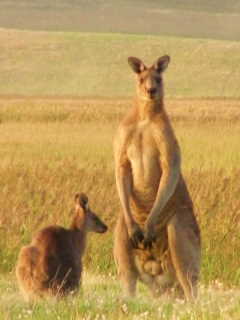
A Big Boy!
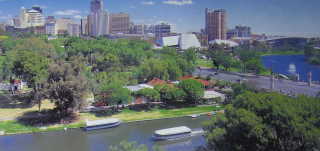
Adelaide........
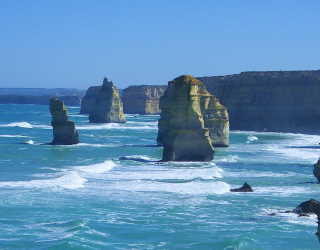
Some of the 12 Apostles......

another view..........

London Bridge is falling down!!
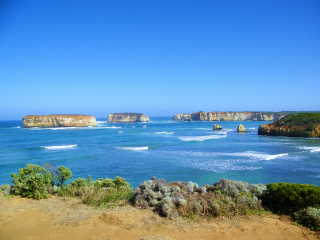
A view of Boat Bay................
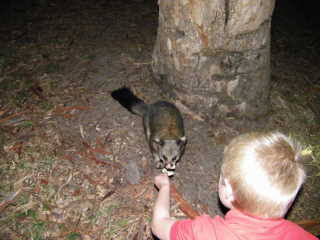
Ben and a possum!
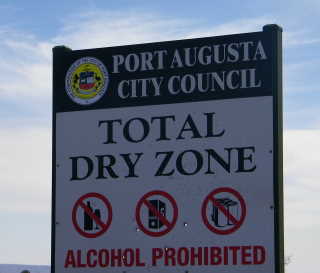
PANIC STATIONS!!
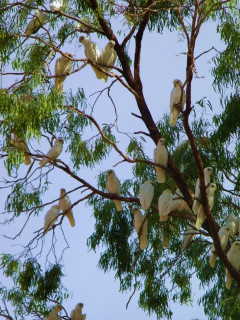
A tree full of Correllas!
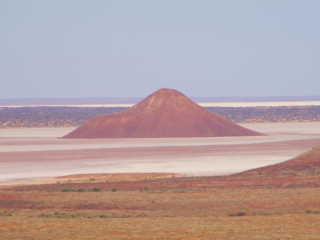
A Salt Flat..........
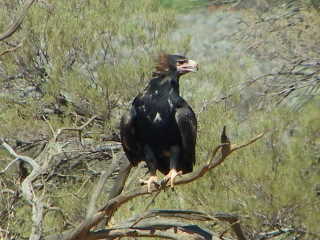
A Wedge Tailed Eagle.......
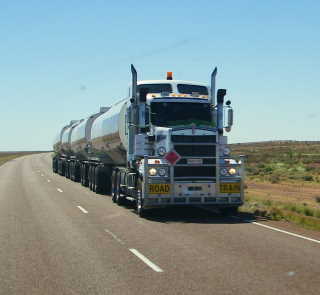
A Road Train.......
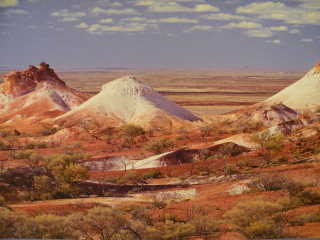
A Mining Field in Coober Pedy....

The Dingo Fence........
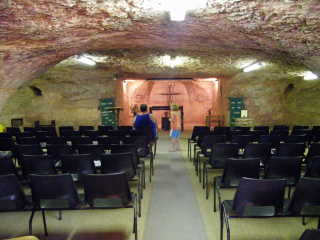
An Underground Church in Coober Pedy.....
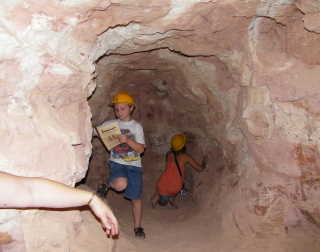
The Mining Experience.........
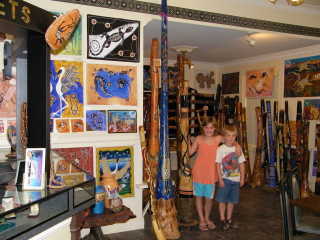
The World's Largest Didgeridoo.......
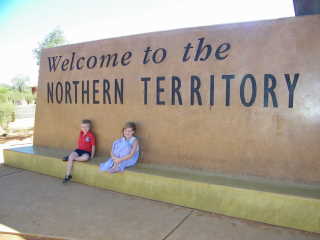
We were there!!

We were there!!
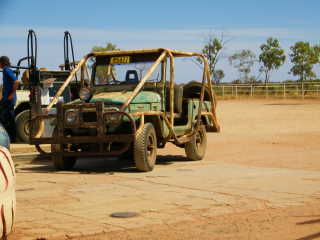
Rough and Ready.......
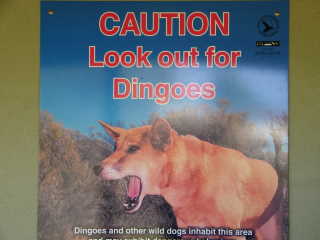
Dingo Alert...........
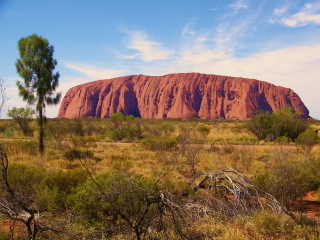
ULURU.....
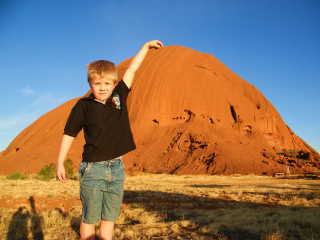
'Look how tall I am now!'
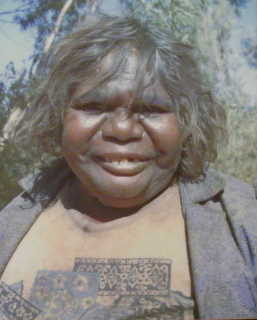
A friendly local.......
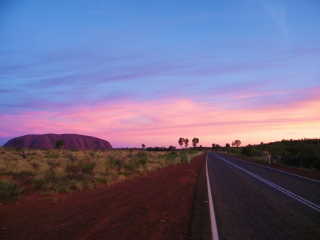
The Road and the Rock........
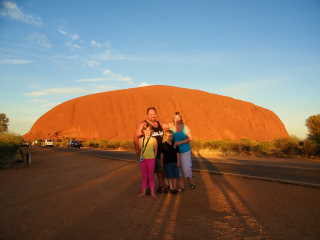
Us at Uluru........

The Ulgas.........
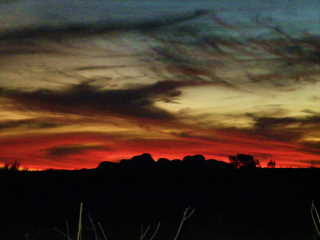
Most Amazing Skies...........
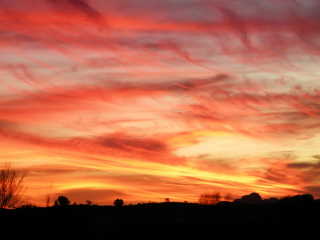
A Beautiful Sunset......
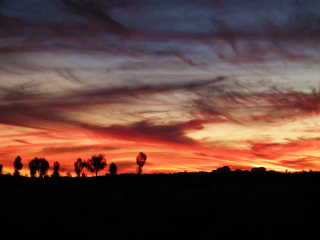
and another view ..........
Wednesday, 29 April 2009 11:27:04 (GMT Daylight Time, UTC+01:00)  Australia
Australia

Sunday, 26 April 2009
Coober Pedy to Tennant Creek........
It was a long drive to Coober Pedy, in South Australia, but there was no choice in the miles covered if we wanted to stay in civilisation later that day! We really enjoyed the drive and we would have to disagree when people have said to us that the drive through the centre of Australia is a very long stretch with nothing to see! Yes – it is a very long distance – but it is certainly not filled with nothing! It was great to see the changing colours within the scenery –a completely new world from anything we have ever seen before. We spotted plenty of Wedge-Tailed Eagles and the occasional Roo too!
The Stuart Range Campsite at Coober Pedy provided a welcome stop with an even more tempting swimming pool – it must have been hot as even I went in!! There was a very dusty and humid heat that could only be relieved by being in the water.
Coober Pedy is renowned for being the Opal Capital of the world and we went to explore. This mining town in the middle of desert has only had the luxury of television in the recent years. There has been no need for a television in a mining community. The desert has a stony and treeless landscape where anything would struggle to grow successfully. The town is surrounded by a moonscape landscape which is dotted with shafts, warning signs for the thousands of open mine shafts, and mullock heaps from the opal mining activities, which now extend to 40 kilometres around the township. Many of the town’s houses and other buildings have been built underground. It has a multi-cultural mining community where people live, work and enjoy their life underground!
We visited the Catacomb Church which developed from an old dugout and opened as an underground church in 1977. It has been cut out of the sandstone into the shape of a cross. The church was designed as, and remains today, a place to escape the harsh climate and to enjoy a quiet, cool and peaceful time.
The ‘Old Timers Mine ‘was fascinating as we took a self -guided tour. It was an original opal mine dating back to when it was hand dug in 1916. The shafts had been filled in, to hide the mine below. It had then been accidently re-discovered when an underground house extension broke through, revealing much precious opal – lots of which was left there for us all to see. We saw two undergrounds homes, with the mine running through, just next door and saw many seams of opal as it ran through the walls. Jemma and Ben had a go at ‘noodling’ or ‘fossiking’ and were very pleased with their finds – dedicated to the last- even in the extreme heat and the battle with the annoying little flies that don’t take ‘no’ for an answer!
The Underground Cafe and Restaurant sounded like a novelty and so we decided to pay it a visit. It was also home to an enormous collection of unique and authentic didgeridoos, including the world’s largest didgeridoo! We only went in for a quick drink – however we came out with more than we had bargained for! We are happy to say that our didgeridoo and set of clap-sticks came from Coober Pedy and have now arrived safely back home to the UK! Phil was even given a lesson to discover how to get a sound out of this weird and wonderful instrument!
As we continued along our journey we passed the Dog (or dingo) Fence which is a surrounding fence to the north of Coober Pedy and this keeps the dingoes away from the other animals. We had another long drive, covering 464 miles to reach Ayres Rock Campground, in the Northern Territory.
They were right! However many pictures of Uluru (Ayres Rock) we had seen, did not prepare us for the real thing – and the sense of the ancients spirits. Sat within the rich red plains in the centre of the desert, Uluru has a power all of its own. We were then in the red centre too, in the heart of the Australian outback and it was breath-taking once again! The red rock bounced off a variety of magnificent fiery colours both at sunrise and sunset, with more different shades of blues and purples throughout the daytime hours.
The Anangu people are the traditional owners of Uluru and would like visitors to respect their wishes, culture and beliefs. They do not like people to climb the rock and they are saddened when people get injured or killed attempting the strenuous climb. Over 35 people have died on the climb. There are also sacred areas around the rock where it is forbidden to walk or to take photographs.
We were lucky enough to see the rock a number of times and to see the most unbelievable sunset. On the trip back to the camp the colours over the Olga’s (Kata Tjuta) created the most amazing skies that any of us have ever seen. The patterns and the variety of colours were stunning and we had to keep stopping for just one more photo!
We are very pleased to have experienced Uluru.......
Next we drove around to see the Ulgas and were able to walk up to the viewing point. The views were amazing and we were very grateful to use our latest purchase -of a hat each - WITH A FLY NET ATTACHED! This was a necessity – if you didn’t want a hundred flies up your nose and in your buzzing around your ears at the same time! It tried the patience of us all prior to using those hats! We had a laugh as we were walking back down to Aussie when a young couple were just getting out of their car and about to climb to the viewing point. Phil told them that they must be brave as they had no fly nets and they just said – ‘no worries – we are tough!’ We sat in Aussie and waited just a couple of minutes with the camcorder at the ready – and it was hilarious to see them trying to outrun the flies on their very quick decent back down to the bottom! Their gentle jog turned into a full blown sprint and we now understand the Aussie wave -as hands flap around people’s faces in a frantic style! We caught the moments on camcorder and thought how well they would fit with the Benny Hill music!!
We left The Rock behind and journeyed to Alice Springs. At the Stuart Caravan and Cabin Tourist Park Phil enjoyed some happy hours with a Danish chap called Tencars, who was excellent at English! We talked about when Macswayround was in Denmark, very near to the beginning of this trip and it feels like a life-time ago to us!
We went to visit the Royal Flying Doctors Headquarters and Visitor Centre at Alice Springs, to find out more about the work that this service does. This was an operational base until a few years ago and opened in 1939. As you will be aware that we are fundraising for our county- Devon Air Ambulance, it was interesting to compare how this Australian service is operated. There are some helicopters used here around the coast for sea rescues, but aeroplanes are used for the flying doctor service, due to the expense, distances covered and the fact that there is plenty of open space to land a plane! We found out that the service is not only used for emergencies, but also to get a doctor to a remote place to hold a clinic. Patients will travel hundreds of miles to arrive in a place, on a certain day, if they know the doctor will be there. The service is also used to transfer patients between hospitals if more specialised help is required. The visitor centre is a non-profit making organisation with 100% of proceeds going towards replacement of medical equipment and aircraft. Each aircraft effectively functions as a flying intensive care unit. We watched an informative video and observed the coordination of medical evacuations and took a look around the interactive museum. Phil had a go at controlling the flight simulator and was pleased to take off, fly and land somewhere (even if it wasn’t on the run way!) He was very pleased with himself to land safely as this simulator is not a video game but a real simulation of a Pilatus P-C – 12 single engine aircraft and he has only ever had one flying lesson before! He had gathered quite an audience by the end of the 15 minute flight and received a round of applause when he landed!
At the Frontier Homestead, Jemma and Ben were very happy to have a camel ride! They shared the same camel and looked like the real thing as they trekked through the desert lands!
At the Didgeridoo centre along the Todd Mall, we all took the opportunity for a didgeridoo workshop! There were at least 60 of us all sat in rows trying to copy what was happening at the front! This instrument looks so easy when it is played by an expert- but some of the noises our group were creating were extremely undesirable!
We enjoyed our time in Alice Springs, known around the world as Australia’s most famous outback town. It is celebrated for the natural beauty of its surrounding desert and location.
On the way to Tennant Creek we passed through the Barkly Region and saw the Devil’s Marbles. These massive granite boulders, piled on top of each other, were formed over millions of years. They are 4 metres high and 13 to 33 metres wide. The Aborigine theory is that the Devil’s Marbles are Rainbow Serpent Eggs.
NEXT STOP TENNANT CREEK!!
FACTOIDS-
· Coober Pedy is situated 845 kilometres north of Adelaide and 690 kilometres south of Alice Springs.
· Coober Pedy offers a unique experience as the world’s major supplier of opal. Its name comes from ‘Kupa Piti’ which in Aborigine means ‘white man’s hole in the ground’.
· Opal was discovered in Coober Pedy in the early 1900’s by a 14 year old boy who was camping with his father’s gold prospecting party.
· Coober Pedy has a population of approximately 3,500 people, which is made up of over 40 different nationalities.
· The Opal is Australia’s National Gemstone.
· Australia has 95% of the world’s supply of commercial opal and the largest percentage still comes from the 70 opal fields around Coober Pedy.
· The ‘Olympic Australias ‘ found in 1965 in Coober Pedy, is said to be the world’s largest piece of uncut precious opal and weighs 3.5 kilograms. Its name comes from the fact that the piece was found in 1956 - the year the Olympic Games were held in Melbourne, Australia.
· Summer temperatures at Coober Pedy range from 35 degrees Celsius to 48 degrees Celsius in the shade. The annual rainfall is minimal at around 175mm (5 inches) per annum.
· Road Trains are up to 53.5 metres long and 2.5 metres wide and have up to 3 trailers in this area. To pass safely you should be able to see at least one kilometre of clear road ahead of the road train!
· Uluru measures 9.4 kilometres around its base and stands at 348 metres tall. Up close Uluru is very textured, with shapes and curves not usually captured in photographs or postcards.
· Geologists say that another 6 kilometres of Uluru remains under the ground!
· A Sacred Site means a site that is Sacred to Aboriginal people or is significant according to their tradition. It can include trees, hills, rocks and springs.
· Kata-Tjuta (the Olgas) is a collection of 36 rock domes, with Mount Olga being the tallest, at 457 metres high.
· Kata-Tjuta means ‘many heads’ in the local indigenous language and is in the Uluru-Kata -Tjuta National Park.
· Kata-Tjuta is also of great spiritual significance to the Anangu people and is protected to the point that no indigenous stories from the site have been shared with visitors.
· Kata-Tjuta is estimated to be 500 million years old.
· Archaeological work suggests that Aboriginal people have lived in the area for at least 22,000 years.
· The FIRST Royal Flying Doctor Base was established in Cloncurry, Queensland, in 1928 (although it is now re-located to Mount Isa).
· Today, Alice Springs, together with Port Augusta and Adelaide, combine to provide the three operating bases that make up the Royal Flying Doctor Service (RFDS) Central Operations- which covers the Northern Territory and South Australia. In addition the RFDS also operates medical facilities in Tennent Creek in the Northern Territory, and Marree in South Australia.
· The area covered has a radius of 600kms from Alice Springs. This area can be covered in approximately one and a half hours.
· The RFDS now has 22 bases nationally and also operates 4 medical facilities. Today, the crews cover 80% of the Australian continent and there are 51 aircraft in operation.
· This year it is estimated that the RFDS will make 250,000 patient contacts across Australia – that is one new patient every two minutes, which indicates the vital importance to ‘keep the flying doctor flying.’
· Former Prime Minister of Australia, the late Sir Robert Menzies, once said that the Flying Doctor Service represented the ‘greatest single contribution to the effective settlement of the far distant back country that we have witnessed in our time....’
· In Alice Springs, there is a School of the Air which covers approximately 502,000 square miles (1,300,000 square kilometres) making it the world’s largest classroom! It was established in 1951 to provide a much needed education resource to children living in remote Central Australia. At that time it was the only one if its kind in the world and HF radio was the mode of communication for school lessons. Today, high tech computer technology is used to provide an interactive education service, across the miles.
· The Devil’s Marbles are 393kms North of Alice Springs and 1 hour south of Tennant Creek.
MORE AUSTRALIAN WILDLIFE HITS:
· White –backed Magpies
· Starlings
· Bell Minors
· Little Pied Cormorant
· Welcome Swallows
· Fairy Martins
· Superb Blue Orange Bellied Parrot
· White Winged Chough
· Musk Lorikeet
· Grey Strike Thrush
· Orange Bellied Parrot
· Huntsman Spider
· Wolf Spider
· Buzzards
· Eastern Rosellas
· Singing Honey Eater
· Guanas
· Nankeen Kestrel
· Emus
· Fantail Willy Wagtail
· Masked Wood Swallow
· Magpie Larks
· Spinifex Pigeon
· Butcher Bird
· Pied Butcher Birds
· Red Winged Parrots
· Port Lincoln Parrots
· Green Budgies
· Zebra Finches
· White Necked Herons
Sunday, 26 April 2009 15:34:47 (GMT Daylight Time, UTC+01:00)  Australia
Australia

Monday, 20 April 2009
Tassie and beyond............
We arrived back into Melbourne early next morning and caught a most beautiful sunrise over the skyscrapers of the city.
As we drove from Melbourne, back to our friend, Phyllis’s, there was an earthquake and we wondered what on earth had happened! We later found out that it had measured 4.6 on the scale. We came back to Rye again as Bev is very sick and so we wished to spend a little more time in the area, before we continued along our journey. We send our best wishes to Bev, and her friends and family.
Phyllis was kind enough to take us out for a day to the Healseville Sanctuary. It was a wonderful place that helped to care for Australia’s native animals and the centre has been very busy recently, having to care for injured and sick, and/or homeless animals following the area’s severe wild bush fires. It was very interesting to visit the animal hospital and to watch live operations through the big screens. The staff appeared to be very positive and passionate about their roles and do a fantastic job. The fires got extremely close to the sanctuary and some animals were actually evacuated as a precaution.
Driving through some of the nearby, fire stricken National Park was devastating to us. We could only begin to imagine the extent of the destruction that has been left behind. The strong smell of burning timber was still in the air, this time later.
While we were along the Mornington Peninsula, we also caught up with Jack and Kath, who are relations of some of our friends at home. They were very hospitable, as we turned up on their doorstep and we felt at home, as they even had an English style bar inside their house! Many thanks to Jack for taking the time to show us around, including to Arthurs seat (on a brighter day), and to Flinders where the first communication lines were laid - from there to Tasmania. These lined helped world-wide communication........
As we gave our thanks and wished our Rye and Safety Beach friends well –please remember our UK door is open for us to return some of your favours.
We set sail on another ferry, on a mission to meet up with some long-lost cousins! The Sorrento to Queenscliff ferry took just over half an hour and saved us a huge drive right around the bay to the Geelong side of Melbourne. It was a novelty to be able to stay with Aussie on this ferry, as the vehicles were not stored below the sea level.
It was great to meet Neil (my Nan’s cousin’s son!), Lou and their family! The children all got on very well together (and the adults did too!) and we must say special thanks to Marlee for all her patience with the Billy lids (kids!). We had a walk along the beach, with some of us adding a paddle or two. As we walked along there were a bride and groom having some photos taken with the sandy backdrop –a very romantic setting! Later on, we enjoyed a BBQ and met more of the family, including Ken (my Nan’s cousin) and Louis, who we remember from their visits to the UK!
Once again......we always said that we would be ‘down under’ ....one day! Ken actually sent me 20 dollars in 1992 to begin to begin my savings and as we did not have any other changed up money when we landed in Brisbane – this was the money we used to pay for the taxi to get to the camper pick up point!! It got a strange look as it was old fashioned ‘paper money’ rather than ‘plastic money’ –but at least it was still accepted!
The next day was Sunday so we were able to spend more time with the family. Serendip Sanctuary had a very wide variety of birds and animals to see – which was another hit! The day was topped off by a walk along Geelong Seafront, and a celebratory swim when some young legs reached the other side!
Our children enjoyed good ‘ole ‘sleep – overs’ with their new friends, while we kept Aussie company for the nights! As Monday dawned to the calls of school and work for the Geelong family, we took ourselves off to try our luck panning for gold at Sovereign Hill, Ballarat. The discovery of gold in 1851 bought a flood of gold seekers from all over the world to Ballarat. Today, Sovereign Hill is a working township that tells the story of the world’s richest alluvial gold rush. We took a tour underground to a mine and witnessed some of the struggle of work and sheer delight of the minors, as they fell upon a nugget of gold. We watched a demonstration to show the time consuming process of how ‘old fashioned’ sweets were made. At the smelting of a gold ingot –Jemma was lucky enough to be asked to hold the finished product – at a value of $140,000!! Apparently, Jemma was chosen for her innocent face?! We met the lady in the Robinson & Wayne shop on the Ballarat main street who was dressed in period costume (along with all her colleagues) and her shop was nostalgically stocked with a selection of soaps, lavenders, and sweets in a jar!
We enjoyed a meal at the Shell Club – many thanks to Ken for his treat and we were able to meet one of his brothers, Harold, again, two sisters and a niece! We learnt lots about the travels we have yet to come- through the central outback of this country and its gems along the way! The evening was completed in the pokies hall. We didn’t chance our luck too much – it was better to watch the experts at work!
We would like to thank Neil, Lou and family for our extended visit (we do hope we didn’t over stay our welcome -but we were having such a good time!). Thank you for everyone’s efforts to accommodate us, in the already hectic weekly schedule. At any time you land in England we would love to return the favour!
We said more goodbyes (this doesn’t get any easier for us on Macswayround –but we do know we have good friends in a variety of places around this world!)
All of us set off down the infamous Great Ocean Road. For the first part, the coast road reminded us of the Devon/Cornwall coastline, at home. We stayed at Prince-town – NO – not at the prison- for those Devon folk amongst you! In the morning the wild kangaroos were all around Aussie, which was great!
We enjoyed the power and presence of the Twelve Apostles, the scenery was stunning and very unusual – although all twelve are not still intact any- more!
It was great that we were able to spend some more time with Steve and Jen and co as they met up with us again at the Prince-Town camp-ground. Happy Hour once again!
As we made our way to Dartmoor, Aussie kept stopping for just another photo- as the scenery around each bend was amazing. A part of the London Bridge collapsed not that many years ago but an enormous arch still remains to be seen. There are also many other smaller tunnels and bridges that have been formed by the powerful erosion of the sea.
We left Steve and Jen in Dartmoor as we had to go into Adelaide to do a few jobs. We stayed at the Adelaide Shores Caravan Resort before heading off to Port Augusta. The temperature crept up to 42 degrees and it was only comfortable sat right under the air conditioning! Port Augusta Caravan Park was full of animals and birds again and Ben found a beautiful peacock feather!
On April Fool’s day we took off for our big journey towards the centre from Port Augusta to Coober Pedy........................more about this unique place soon!
FACTOIDS-
· The Serendip Sanctuary covers 250 hectares through the western plains of Victoria.
· Geelong is the gateway to the Bellarine Peninsula: one of the most bountiful and beautiful regions near Melbourne.
· Geelong is one of Victoria states most historically significant cities, with more than 200 buildings that are registered with the National Trust.
· The Great Ocean Road follows a route around the coastline for 300kms from Torquay to Warrnambool. The road was begun in 1919 and completed in 1932 and is now dedicated to the memory of the First World War. It was actually built by returned servicemen using only picks and shovels.
· In the late 19th and early 20th centuries, many ship captains sailing through south-east Victorian seas found themselves, their crew and passengers at the mercy of the wild weather and an unforgiving coast – it is now known as Ship-wreck Coast as over 700 ships have met their watery grave along the stretch.
· Bells Beach, in Torquay, is world- renowned for its surf and competitions.
· The Twelve Apostles are mighty limestone monoliths which have been ground away by thousands of years of wind and waves. The limestone columns reflect a kaleidoscope of reds and golds from sunrise to sunset. They were originally named the Sow and Piglets.
· Dartmoor has a Memorial Streetscape which was officially opened on Anzac Day 2003. There are spectacular carvings in the trees along the way. The Cedar trees were planted in September 1918 to commemorate World War One Servicemen and Nurses from Dartmoor and the District. The trees had to be felled due to disease and so a feature was made of them.
· Adelaide is traditionally the ‘Place of the Red Kangaroo’.
· Australia note money is now REALLY made out of plastic – instead of paper!
WILDLIFE HITS-
· Straw Necked Ibis
· Australian White Ibis
· White Faced Heron
· White Fronted Tern
· Bell Birds
· Pied Curra Wong
· Common Myna Bird
· Little Grey Heron
· Australian Little Raven
· Blue Heron
· Sea Gulls
· Fish Eagles
· Fairy Wren – Superb
· Brown Falcon
· White Breasted Eagle
· Australian Great Teal
Monday, 20 April 2009 00:24:19 (GMT Daylight Time, UTC+01:00)  Australia
Australia

Sunday, 19 April 2009
And the rest of Tassie - hooray!!

Scotland - Down Under!
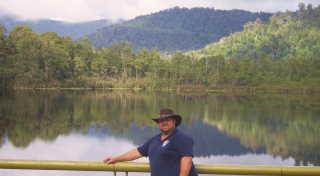
MAC DUNDEE!
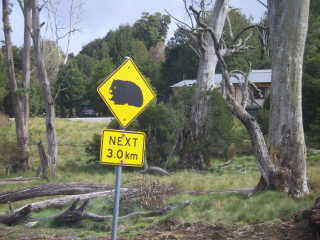
Wombat Alert!

Cradle Mountain.
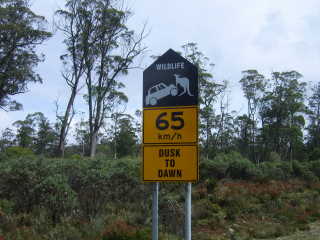
Strong Roos around here!
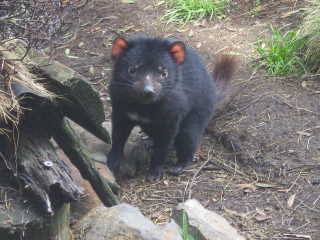
Devil Alert!

Devil Alert 2 !

The View from the Top of the NUT!
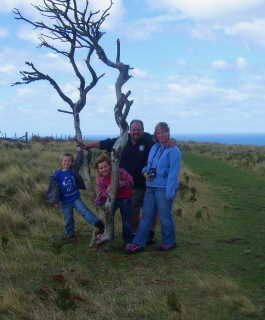
Slightly windswept!
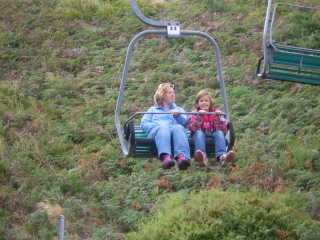
The Nut Chair Lift!

Good 'ole fashioned shops!

In the good 'ole days!
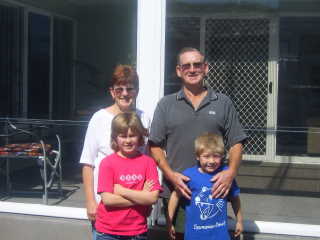
Our Tassie Friends - Gus & Faye and co!

A Spot Just Before Penguin!
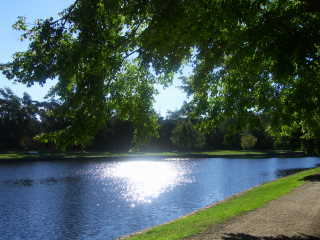
Our Platypus Search!

Did you see one yet?
Sunday, 19 April 2009 11:53:41 (GMT Daylight Time, UTC+01:00)  Australia | Tasmania
ANOTHER TASSIE FIX!
Australia | Tasmania
ANOTHER TASSIE FIX!
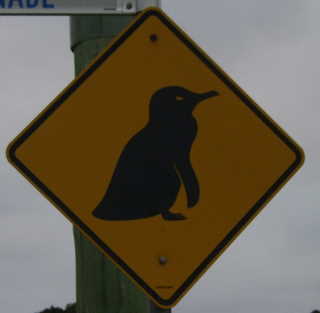
Penguin Alert!

Coming Home for the Night!
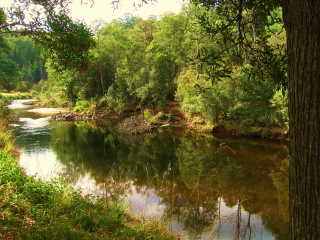
A Tassie Hotspot!
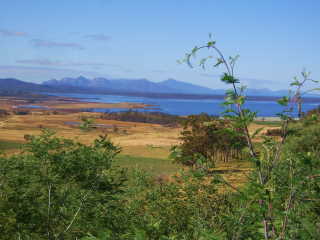
and another!
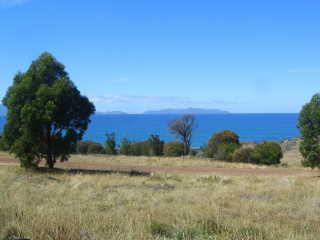
Tassie Mania!
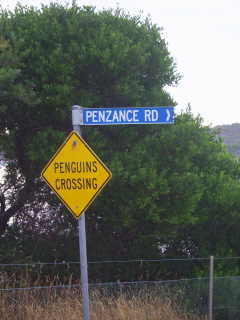
BEWARE!
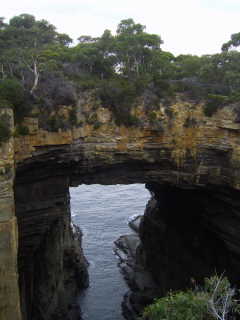
The Tasman Arch.
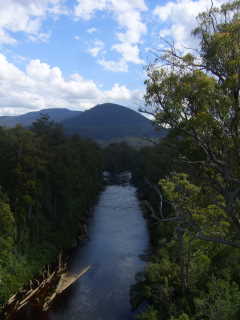
Tahune Forest Reserve.

Our Pot of Gold!
Sunday, 19 April 2009 00:58:27 (GMT Daylight Time, UTC+01:00)  Australia | Tasmania
Australia | Tasmania